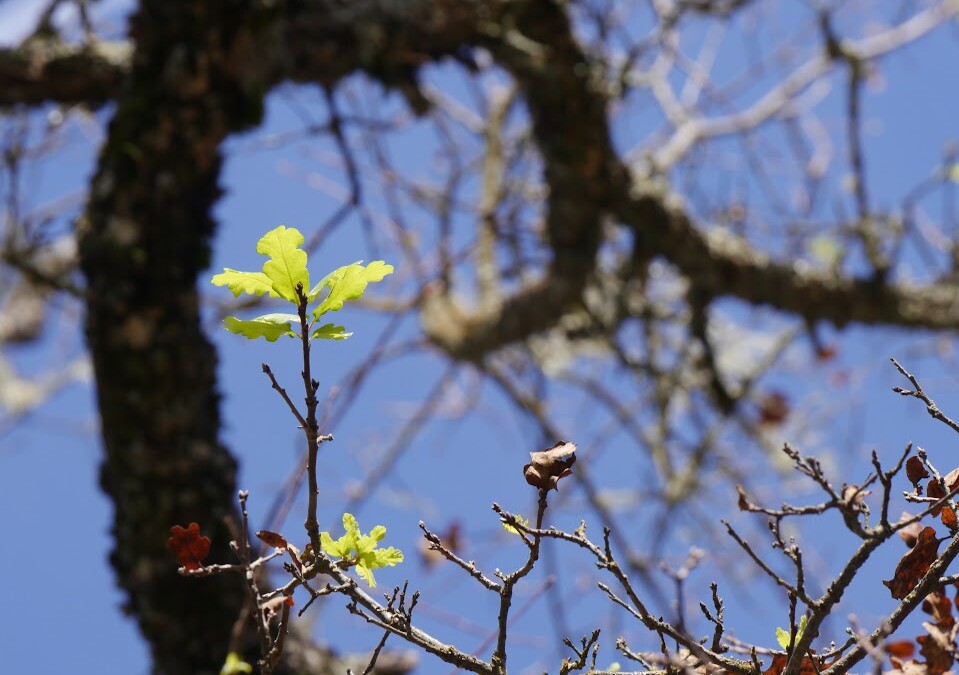Sonoma Ecology Center has an urgent message for local residents cleaning up fire-scorched properties: Please don’t cut down those trees and shrubs.
They may look dead after last month’s wildfires killed their leaves and blackened their bark. But most are not dead – and more often than not, letting them alone will result in vigorous new growth next spring, just a few months away.
“California’s trees have adapted to wildfire over thousands of years,” explained Sonoma Ecology Center research program manager Caitlin Cornwall. “That’s especially true of the many varieties of oak trees here, which really make up the backbone of Sonoma Valley’s forests and woodlands.”
Cornwall added, “The bigger the oak, the thicker its bark, the greater the likelihood the tree survived.”
As University of California scientists stated in a 2004 report titled “Fire in California’s Oak Woodlands”: “Unlike most coniferous species, oaks have evolved mechanisms to survive periodic burning. Moderate and even low-intensity fires can scorch all the leaves on woody plants. For most conifers such damage is usually lethal. Oaks, on the other hand, suffer little long-term damage from the burning of their foliage.”
Unless the tree poses an imminent danger to people or property, scientists recommend waiting at least a year after a fire to determine whether a tree is dead. Even dead trees should be left in place as habitat for cavity-nesting birds like bluebirds and owls, acorn storage for woodpeckers, and wood-eating insects that then become bird food.
Most tree species in our local forests and woodlands will sprout from their base, producing many shoots that thin out over time. Because they already have well-established root systems, these trees tend to grow much faster than those from seed.
Many of today’s oaks in California, especially those with several main trunks, originated as sprouts from long-ago wildfires. And chaparral – the brushy collection of manzanita, toyon, coyote brush, chamise and other species – actually requires fire to rejuvenate itself. Even after a high-intensity, white-ash fire, chaparral shrubs will re-sprout from their root crowns with vigorous new growth.

